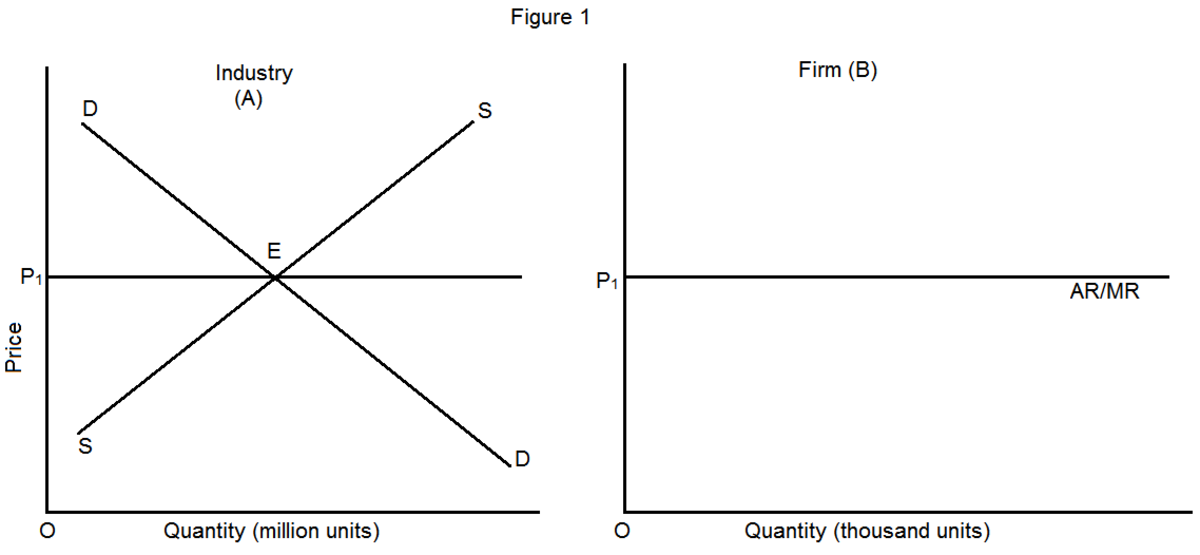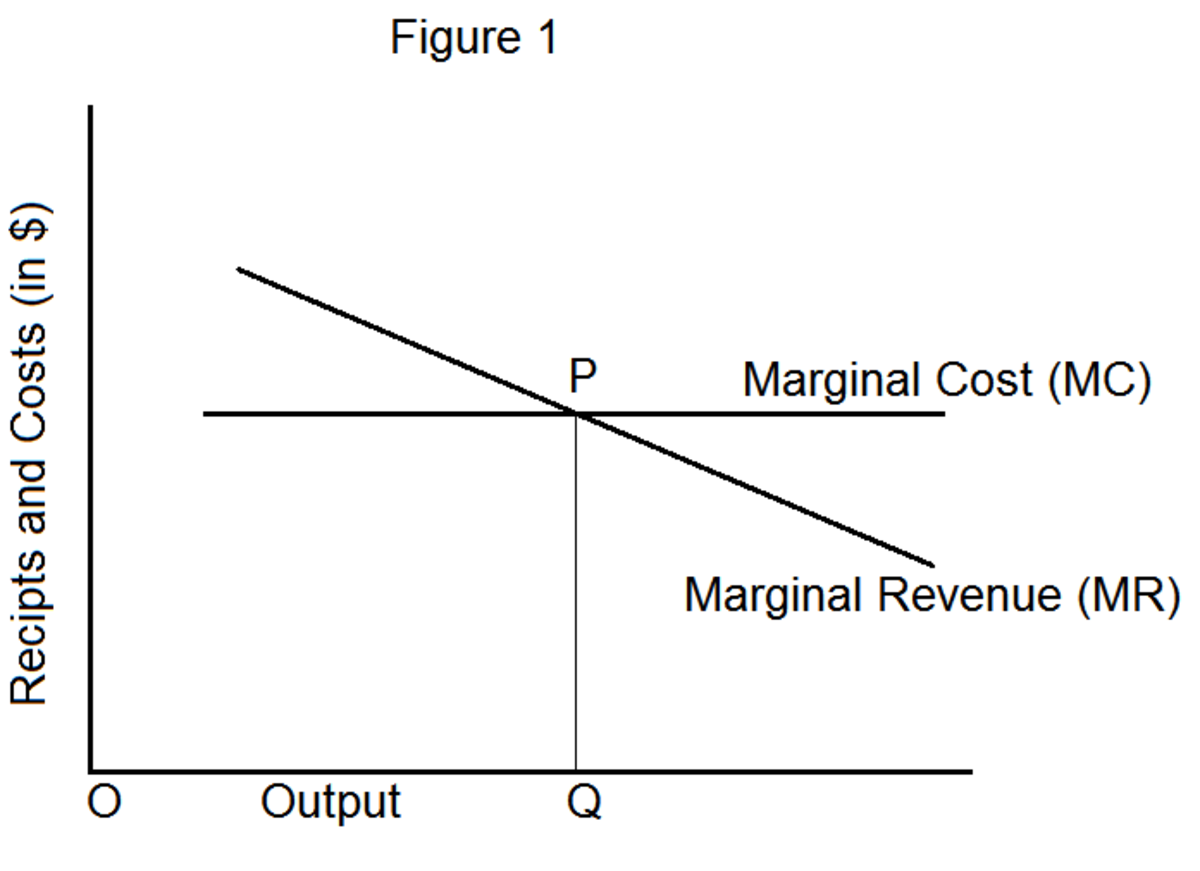Electricity tariffs

Session 2
Electricity tariffs
Contents
2.1 Need for Electricity Tariffs
2.2 Tariff Principles
2.3 Different Tariff Structures
2.3.1 Domestic & Religious purpose Tariffs
2.3.2 Tariff for bulk supplies to licensees
2.3.3 General Purpose Tariffs
2.3.4 Industrial Tariff
2.3.5 Tariff for Stand by Supplies
2.4 Conclusion
Aim
The aim of this lesson is to teach you the various principles underlying electricity pricing and how numerous requirements can be incorporated in to the systems of tariff applicable to any particular type of consumer.
Specific Objectives
At the end of this lesson, you will be able to,
1. Discuss the different systems of tariff used and their merits and de-merits.
2. Discuss the present tariff structure in Sri Lanka.
2.1 Need for Electricity Tariffs
We will be talking about various principles underlying electricity pricing and how the requirements can be incorporated in to the systems of tariff applicable to any particular type of consumer.
This discussion will also help you to gain some knowledge about different systems of tariff used and their merits and de-merits.
Tariffs used in Sri Lanka are discussed in detail. Most of the information pertaining to this has been obtained from the Ceylon Electricity Board web site, http://www. ceb.lk. in year 2005. You may go through this web site from time to time to observe any changes in the tariff structure.
Selected numeric examples will give you better 'feel' for the subject matter we will be discussing in this lesson.
Electricity, as we all know, is a particularly useful form of energy when we think of the ease with which it can be transported and converted in to other forms of energy. It has, however, two particular handicaps as a form of energy. Firstly, it requires appliances for conversion in to other forms of energy, such as heat and light. The second and more important drawback is that, at least in the present stage of development, production of electricity is rather inefficiently done. As we have already learnt, the maximum efficiency of a thermal power station is somewhere around 40% and another 10% or so is lost in transmission and distribution. Incidentally, do you know that this loss is about 19% in our country? This simply means that on the average more than 70% of the energy, which goes into the production of electricity, is wasted, with a few exceptions where this excess heat is used for central heating etc. The picture for hydro electricity looks much more attractive with efficiencies lying close to 70%. Therefore, whether we like it or not, we have to accept the fact that the extensive and ever increasing use of electric energy is a major contributory cause of the present energy crisis.
Having said that the provision of electricity from fossil fuels is relatively wasteful use of world's energy resources, we realise why it is necessary that the electricity tariffs should reflect correctly the cost of production of electricity.
The demand for electricity is not the same at all times of the day. In other words, the demand fluctuates with time of day. In other countries, demand can vary with different seasons of the year, which is not particularly relevant to our country. (For example, more energy is required during winter for heating.)
Electricity can not be stored in large commercial quantities as many other commodities; it must be produced at the moment when it is demanded, any time of the day, year in and year out, in accordance with a large multitude of consumers at that particular moment of time. Thus, we see that there is always a varying amount of surplus capacity available.
Tariff structure is essentially intended to recover fixed and variable costs in the generation, transmission and distribution of electricity. Particular emphasis is laid here on the method of production or generation. Not only do these different methods of generating electricity have widely varying average and marginal costs of production, but they also vary substantially in the proportions of fixed and variable costs.
Consequently, the overall cost structure as it affects tariff will change as the proportion between these methods of production changes. To explain this, let us consider a familiar example. As we studied in the earlier lesson, the cheapest form of energy is hydro electricity or large thermal (coal) if available, although it requires high capital investment. Gas turbines and diesel generators, on the other hand, do not need such high capital investments. However, their operating costs are extremely high depending on the prize of fuel.
If electricity is produced using more gas turbines/diesels and less amount of hydropower, the high operating costs will have to be recovered by means of tariffs. (This is why the introduction of fuel adjustment charges was necessary for your electricity bill from time to time). Electricity supply is, after all, a business, which must pay its way, and thus the systems of charging for electricity are important. A scale of charges is called a tariff, and different scales devised to cover the cost of the supply are employed by the supply authorities. Supply authorities may offer different tariffs and it is some times the duty of the installation engineer to assist consumers in deciding the suitable tariff.
As already mentioned, the cost of the electricity supply to the authority may be broadly divided into the standing costs and running costs. The standing costs are those which have to be meet irrespective of the amount of electricity supplied from the generating station and the mains. Interest on capital, salaries and wages, rents, taxes, depreciation of plant and a portion of the cost of fuel and water are some costs coming under this category. On the other hand, running costs depend upon the actual amount of electricity produced and supplied. These include further costs of fuel and water, replacement of plant etc.
Then we see that a reasonable tariff to each type of consumer should include a fixed charge, calculated to cover the standing costs attributable to such a consumer, and a unit charge to cover the running costs per unit.
2.2 Tariff Principles
The principles and considerations which the designer of tariffs must take in to account to provide a sound basis for electricity tariffs, may be divided in to four main groups; economic, socio-political, technical and accounting/administrative. Inevitably, these four groups cannot be considered independently and more often than not, there are conflicts between two or more of these.
The economic principles are inclined to be the most abstract, and tend to be influenced by theories developed to account for observed or anticipated situations. The economist, since it is not possible to lay down a norm for human behaviour, is obliged to make various assumptions in formulating his theories, while recognising the element of doubt that arises from these assumptions. It is not our purpose to discuss those theories in detail here. Let us just remember that the economists play a major role in formulating electricity tariff principles.
The socio-political aspects, on the other hand, are determined by public opinion, rather than by theory and reasoning. Those matters determined by public opinion may often overrule economic considerations, and are outside the economist's competence. Public opinion is extremely difficult to define and can be influenced by consumer education, or oratory, advertising and so on.
We have already covered the technical considerations in the earlier lesson. You will recall that although the technical factor can be defined with greater precision than either of the foregoing, they too will frequently require compromises and are influenced by uncertain external considerations. We discussed many constraints and limitations imposed by technical factors.
In dealing with accounting considerations, we are concerned mainly with the practice of recording and supervising the financial aspects of the day-to-day operation of the enterprise, of finding practical methods to ensure that consumers are charged for and pay for their electricity consumption and the like.
2.3 Different Tariff Structures
We have discussed some principles on which the tariff systems are usually based. A tariff system, we said, should be designed to achieve these objectives, as far as possible. As you may understand, it is often not possible in practise to achieve all these objectives simultaneously.
We shall therefore discuss first, some of the commonly used tariff systems.
The first tariff system use was known as the flat rate system. In this system of tariff, as its name implies, the charges are at a flat rate. However, in order to preserve an adequate load factor, electricity used for lighting, other purposes are metered separately, and latter charged at a lower rate. Perhaps, you may be wondering what this load factor is. This is usually applied to a 24-hour period and defined as follows:
The chief merit in this system is simplicity. Nevertheless, this system is rapidly disappearing, since it cannot represent many complex types of consumers with sufficient accuracy.
Two part tariff again is another commonly used system, in which the charge to consumer which are related, at least in theory, to fixed and running costs of the supplies. For example, the electricity bill may have a fixed charge of Rs.50/- plus Rs. 7.00 per kWhr consumed, for a period of 30 days. The fixed component however, may vary from one consumer to another, and will usually be based on the number of rooms or floor area of the consumer's house, or it may be arrived at just arbitrarily. Therefore, you will realise that this system too is not a very reasonable one.
A fairer means of charging used widely is the block rate tariff. This system has replaced the old two-part tariff and it eliminates the difficulty of calculating the fixed charge in the system.
The three systems of tariff we discussed above are for domestic consumers. In our country, the system used for domestic supply is the block tariff system.
2.3.1 Domestic & Religious purpose Tariffs
Under domestic & religious purpose tariff, we have the following:
Domestic
Applied to electricity used for domestic purpose, in private residences. Monthly charges will be at the rate of Rs. 3.00 for the first 30 units (first block) exempted from the fuel adjustment charge. For the units in excess of 31 up to 60 (second block), at the rate of Rs. 3.70. For the units in excess of 61 up to 90 (third block), at the rate of Rs. 4.10. For the units in excess of 91 up to 180 units (fourth block) at the rate of Rs. 10.60.For all the units in excess of 180, at the rate of Rs. 15.80. However, time to time, depending on the hydrological condition of the country and the reservoir operating policy/pattern declared by the utility management (CEB), fuel adjustment charge will be introduced for all the units in excess of the first block of domestic consumer energy consumption. Also, all these charges will be subjected to a minimum of Rs. 30/- (called fixed charge) in respect of any month.
This obviously has been design to discourage the consumers from using excessive amounts of electricity. Charges for each block of units increase with the number of units. This was not the situation sometime back, in our country. The earlier system of tariff was designed to encourage maximum energy utilisation. The first block of units was charged at a relatively high price per unit and all succeeding blocks were charged at cheaper rates, under this system. This is a typical example, which shows how a properly designed tariff can control the use of electricity.
Religious
As already mentioned the socio political aspect plays an important role in the design of tariff structures. An example we can take is the special tariff which has been introduced for charitable institutions in Sri Lanka. Such tariff shall apply to the supply of electricity to either a place of public religious worship including a private residence or a residence of a priest or priests, or approved charitable institutions. The monthly charges of tariff in this group will be at the rate of Rs. 2.50 per unit for the first 30 units (first block), for the units in excess of 31 up to 90 (second block) at the rate of Rs. 2.70. For the units in excess of 91 up to 180 (third block) at the rate of Rs. 4.00. For all the units in excess of 180, at the rate of Rs. 7.20. However, in this category all the units are exempted from the fuel adjustment charge and subjected to a minimum charge (fixed charge) of Rs. 30/- in respect of any month.
Street lighting tariff too has been introduced mainly for socio-political purposes. Under this, the electricity is charged at the rate of Rs. 7.80 per units plus fuel adjustment charges, if applicable.
Domestic consumers constitute only one of the many groups of consumers using electricity. Commercial premises, farms etc. are offered tariffs particularly applicable to their conditions.
For large power consumers, a two-part tariff is invariably imposed. A standing charge depends on the maximum demand of the consumer, in kW or kVA, while the running charge is the normal type, i.e. for the amount of kWhr used. Let us just see what tariffs are offered for such consumers in our country.
2.3.2 Tariff for bulk supplies to licensees
The rates L1 and L2 set out below apply to bulk supplies provided to licensees. Rate L1 applies to bulk supplies metered at 400 V or less. The monthly charges under this tariff system are the sum of:
1. A maximum demand charge at the rate of Rs.240/- per kVA of maximum demand at each individual point of supply made during the month.
2. Unit charges for blocks of energy as stipulated (Rs. 7.20 per kWhr).
3. Fuel adjustment charge (if applicable)
Rate L2 is applied for the bulk supplies metered at 11 kV and above; as such a maximum demand charge at the rate of Rs. 220.00 per kVA of maximum demand and the unit charge of Rs. 5.40 will be applied. Bulk supply is usually given to LECO (Lanka Electric Company) and Local Authorities (such as town councils) in our country, which in turn supply electricity to many individual consumers. This is why the word ‘licensee’ has been used instead of ‘consumer’ in this.
2.3.3 General Purpose Tariffs
General purpose tariffs are applied to supply of electricity to be use in shops, offices, banks, warehouses, public buildings, hospitals, educational establishments, places of entertainment and other similar premises. This again is a little more complex. There are three tariff systems used for this group of consumers presently.
Rate GP1 applies to supplies delivered and metered at 400/230 V where the assessed demand is less than 42 kVA. The monthly charge is at the rate of 10.90 Rs. per units plus fuel adjustment charge, if applicable. There is a minimum monthly charge (called fixed charge), in addition to the monthly charge mentioned above. This is Rs.30/- when the assessed demand is less than 10 kVA or Rs.230/- when the assessed demand is more than 10 kVA but less than 42 kVA.
Rate GP2 applies to supplies delivered and metered at 400/230 V and where the assessed demand is equal to or exceeds 42 kVA of maximum demand. The monthly charge is at the rate of 10.80 Rs. per units plus fuel adjustment charges, if applicable. The maximum demand charge is at the rate of Rs. 480/- per kVA of maximum demand made during the month. There is a minimum monthly charge, in addition to the monthly charge mentioned above and it is Rs.800/- .
Rate GP3 applies to supplies delivered and metered at more than 400 V, i.e. 11/33/132 kV. The maximum demand charge here is Rs.460/- per kVA and the unit charge is 10.70 Rs. per unit plus fuel adjustment charges if applicable. There is a minimum monthly charge, in addition to the monthly charge mentioned above and it is Rs.800/- .
2.3.4 Industrial Tariff
Another important group of consumers is the industrial group. Industrial tariffs are applicable to a supply of electricity used wholly or mainly for motive power or for electro-mechanical processes. This covers factories, workshops, foundries, and oil mills spinning and weaving mills, pumping stations, port and dock installations and other similar industrial installations.
Rate IP1 applies to supplies delivered and metered at 400/230 V where the assessed demand is less than 42 kVA. The monthly charge is at the rate of 7.50 Rs. per unit plus fuel adjustment charge if applicable.
A monthly minimum charge of Rs.30/- is imposed when the assessed demand is less than 10 kVA, the charge will be Rs.230/- in excess of 10 kVA but less than 42 kVA.
For industrial consumers falling under the category of IP1 above, there is another system of tariff called “time-of-day” industrial tariff. The monthly charge is at the rate of 15.00 Rs. per unit consumed during peak hours i.e. between 7-10 p.m. and 6.90 Rs. per unit consumed during other times, plus fuel adjustment charges if applicable. The monthly minimum charge is as same as IP1.
Rate IP2 applies to supplies delivered and metered at 400/230 V where the assessed demand is equal or exceeds 42 kVA. The monthly charge comprises of maximum demand charge at the rate of Rs.400/- per kVA of maximum demand made during the month and unit charge at a basic rate of 7.10 Rs. per unit plus fuel adjustment charges if applicable. Monthly minimum charge will be Rs.800/-.
Again, there exists peak/off-peak tariff structure for the industrial consumers falling under IP2 category. Here also the monthly charge comprises of maximum demand charge at the rate of Rs.380/- per kVA of maximum demand made during the month and unit charge at the rate of 14.70 Rs. per unit consumed during peak hours and 6.50 Rs. per unit consumed during off-peak hours plus fuel adjustment charge if applicable. Monthly minimum charge will be Rs.800/-.
Rate IP 3 applies to supplies delivered and metered at 11/33/132 kV. The monthly charge comprises of maximum demand charge at the rate of Rs.380/- per kVA of maximum demand made during the month and unit charge at a basic rate of 7.00 Rs. per unit plus fuel adjustment charges if applicable. Monthly minimum charge will be Rs.800/-.
Under peak/off-peak tariff structure for the industrial consumers falling under IP 3 category, the monthly charge comprises of maximum demand charge at the rate of Rs.360/- per kVA of maximum demand made during the month and unit charge at the rate of 14.00 Rs. per unit consumed during peak hours and 6.10 Rs. per unit consumed during off-peak hours plus fuel adjustment charge if applicable. Monthly minimum charge will be Rs.800/-.
2.3.5 Tariff for Stand by Supplies
Another type of supply, although not common, is the stand by supplies. None of the tariffs discussed above apply to this type. These consumers use their own generators for normal operation and use the supply from the grid in case of a failure.
The general Manager, Ceylon Electricity Board, shall determine the rates for stand by purposes in each case. One such consumer is the Ceylon petroleum corporation, where they use their supply for the petroleum refinery at Sapugaskanda.
The established rate metered at 400/230 V, where the “contract” demand is equal or exceeds 42 kVA will be the demand charge at the rate of Rs.100/- per kVA of “contracted demand” and the unit charge at the rate of 7.10 Rs. per unit made during the month. Monthly minimum charge will be Rs.800/-.
For the other stand by supplies metered at 11/33/132 kV, the demand charge is at the rate of 90/- per kVA of “contracted demand” and the unit charge is at the rate of 7.00 Rs. per unit made during the month. Monthly minimum charge will be Rs.800/-.
The “contracted demand” in kilovolt amperes means, the total service capacity required by the consumer based on his installation on the date o connection or subsequently varied at the request of the consumer. This should not be less than the actual maximum demand made at any time.
We see from the foregoing, how complex and varied a tariff system can be, in order to take into account all types of consumers using electricity. However, as already mentioned, a tariff system should be as simple as possible and metering should not be complex.
The prevailing (2005-June) CEB tariff system that we have discussed in this lesson can be summarized as given under:
Customer Category
Conditions
Maximum demand charge Rs./kVA per month
Energy Charge
Rs./kwh
Fixed Charge
Rs./month
Domestic
Metered at 400V/230V
-
0-30 Units @ 3.00
31-60 Units @ 3.70
61-90 Units @ 4.10
91-180 Units @ 10.60
Above 180 Units @ 15.80
30.00
Religious
Metered at 400V/230V
-
0-30 Units @ 2.50
31-90 Units @ 2.70
91-180 Units @ 4.00
Above 180 Units @ 7.20
30.00
General
Purpose
All buildings except industries & some hotels
Metered at 400V/230V contract demand < 42 kVA
Demand up to 10 kVA
Demand above 10 kVA
-
10.90
10.90
30.00
230.00
contract demand > or = 42 kVA
Metered at 400V/230V
Metered at 11/33/132 kV
480.00
460.00
10.80
10.70
800.00
800.00
Industrial
Includes some hotels
Metered at 400V/230V contract demand < 42 kVA
Demand up to 10 kVA
Demand above 10 kVA
-
7.50
7.50
30.00
230.00
contract demand > or = 42 kVA
Metered at 400V/230V
Metered at 11/33/132 kV
400.00
380.00
7.10
7.00
800.00
800.00
Industrial
Time
Of
Day
Includes some hotels
Metered at 400V/230V contract demand < 42 kVA
Demand up to 10 kVA
Demand above 10 kVA
-
15.00 bet 7-10 p.m.
6.90 at other times
30.00
230.00
Metered at 400V/230V contract demand > or = 42 kVA
380.00
14.70 bet 7-10 p.m.
6.50 at other times
800.00
Metered at 11/33/132 kV
contract demand > or = 42 kVA
360.00
14.00 bet 7-10 p.m.
6.10 at other times
800.00
Supplies to licensees
LECO/LA
Supply at 400/230 V
Supply at 11k V & above
240.00
220.00
7.20
5.40
-
Standby Tariff
Supply at 400/230 V
Supply at 11k V & above
100.00
90.00
7.10
7.00
800.00
800.00
Street Lighting
-
-
7.80
-
Let us take a numerical example.
Example
An installation comprises of two 3 kW electric furnaces, eight 75 W lamps and ten 100 W lamps. Calculate the monthly cost of electricity for this consumer, under domestic tariff system. It is estimated that over a year the average use of both furnaces will be two hours daily and of the lamps 100 hours monthly.
Answer
For a period of 30 days,
Heating load
= (3 x 2) 2 30 kWh
=360 kWh
Lighting load
=
=160 kWh
Total monthly load
= (360 +160) kWh
= 520 kWh (i.e. 520 Units)
Once the total load for a period of 30 days is calculated, the monthly electricity charges are computer as follows:
Cost of first 30 units (1st block)
= 30 x 3.00
= Rs. 90.00
Cost of units in excess of 30 units and up to 60 units (2nd block)
= 30 x 3.70
= Rs. 111.00
From 61 up to 90 units (3rd block)
= 30 x 4.10
= Rs. 123.00
From 91 up to 180 units (4th block)
= 90 x 10.60
= Rs. 954.00
Above 180 units (5th block)
= 340 x 15.80
= Rs. 5372.00
Monthly minimum charge is 30.00 Rs. (fixed charge)
Therefore the total monthly bill
= Rs. (90.00+111.00+123.00+954.00+5372.00+30.00)
= Rs. 6680.00
Average unit prize for the above customer during this month would be
= 6680.00/520
= Rs. 12.85
However, what if the fuel adjustment charge is imposed to the above customer during a dry period, at the rate of 115% over and above the 5th block of his energy consumption?
Fuel adjustment charge
= Rs. 5372.00 (125/100)
= Rs. 6715.00
The total monthly electricity bill would be
= Rs. (90.00+111.00+123.00+954.00+6715.00+30.00)
= Rs. 8023.00
Very high isn’t it. This is because the CEB has to run costly thermal generation for hydro backups (such as Gas turbines and diesel engines) during dry years.
The above example illustrates how a typical electricity bill for a domestic consumer is computed. In case where a maximum demand charge is levy, the maximum demand reading for that particular month on the maximum demand meter should be recorded. The charges are calculated for this reading.
2.4 Conclusion
You have learnt many principles and considerations behind electricity tariffs. You have also been given a proper understanding as to why consumers are divided into different groups such as domestic, general purpose, industrial and the like. This not only facilitates easy billing but also gives the supply authority a fair idea of different load requirements.
You also studied about different tariff systems used in our country, in this lesson. In order to familiarise you more with tariffs used in Sri Lanka, it is advised to read the Government Gazette Notification dealing with revised tariffs.
Self-Assessment Questions
1. Explain why the cost of supplying electricity to consumers depends, largely, on the method of production of electricity.
2. What are the fixed and variable costs incurred in supplying electricity?
3. What are the principle considerations in the design of tariffs for different types of consumers?
4. Discuss different tariff structures used in Sri Lanka, and comment on those.
5. The electrical installation in a certain shop comprises of two 2.5 kW electric kettles, each operating on the average of 1 hour per day eight 80 W fluorescent lamps operating on the average for 7 hours per day and other appliances having a maximum demand of 4.6 kVA and consuming 25 units of electricity per month on the average.
6. Calculate the average monthly consumption and the estimated cost of electricity for the consumer.
Assume that there is no fuel adjustment charge for this month. Take the assessed demand as being equal to the maximum possible demand.
Answers
1. See section 2.0
2. See section 2.0
3. See section 2.1
4. See section 2.2
5. Assessed demand
= kVA
= 10.24 kVA (assuming unit power factor for the load)
A small load of this size would obviously be fading at low voltage so that Rate GPI is applicable.
Average electricity consumption per month of 30 days
=
= 150+134.4+25
= 309.4 kWh
Assessed demand is > 10 kVA. But < 42 kVA , the fixed charge would be Rs. 230.00 (from the tariff table given in this lesson)
Cost of electricity consumption
= 10.90
= Rs.3372.46
Cost of total monthly consumption
= Rs. (3372.46+230.00)
= Rs.3602.00








